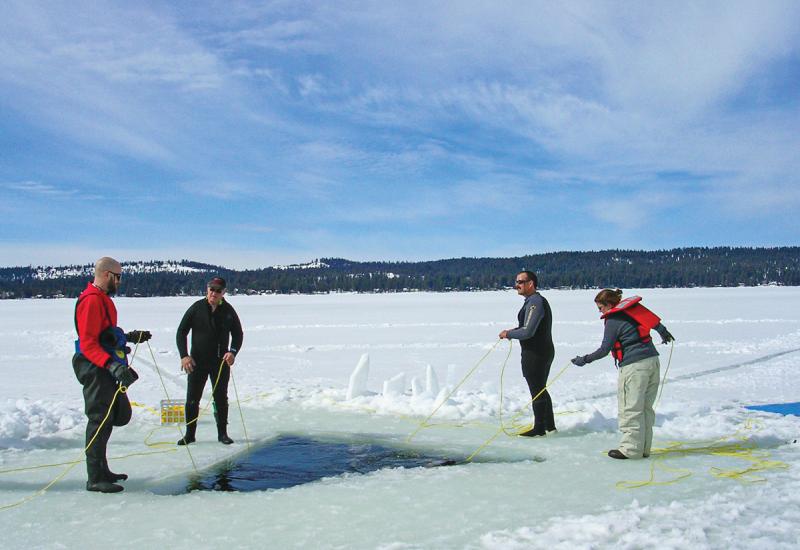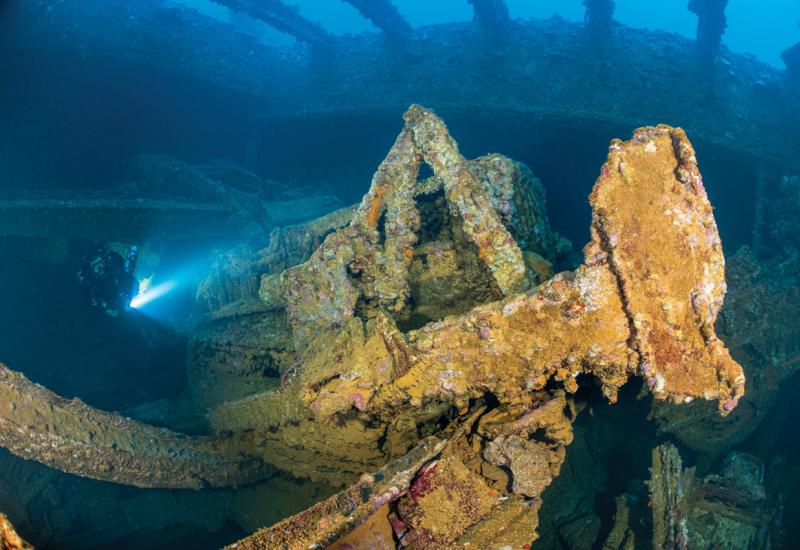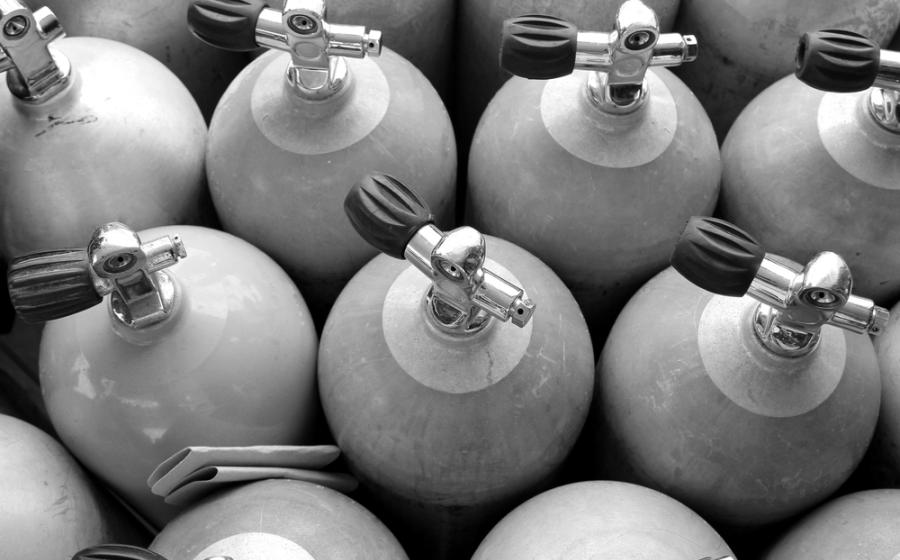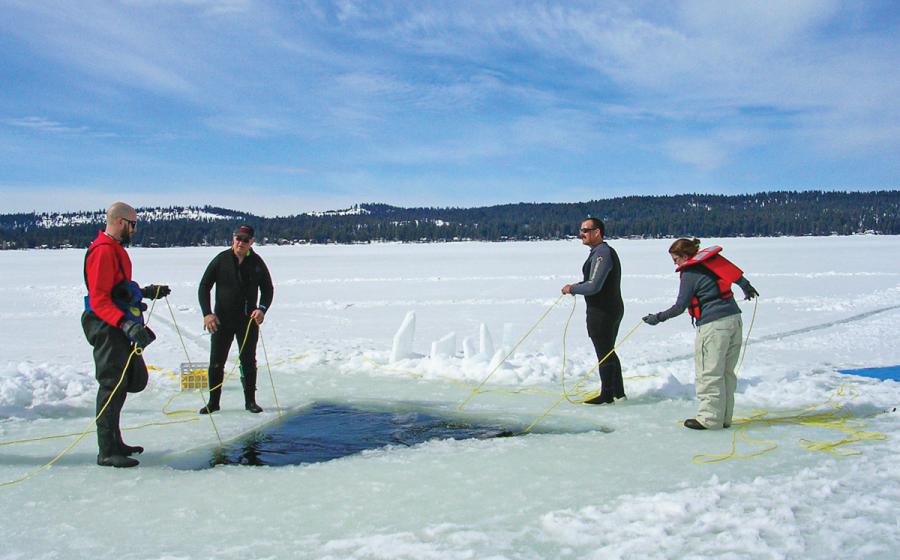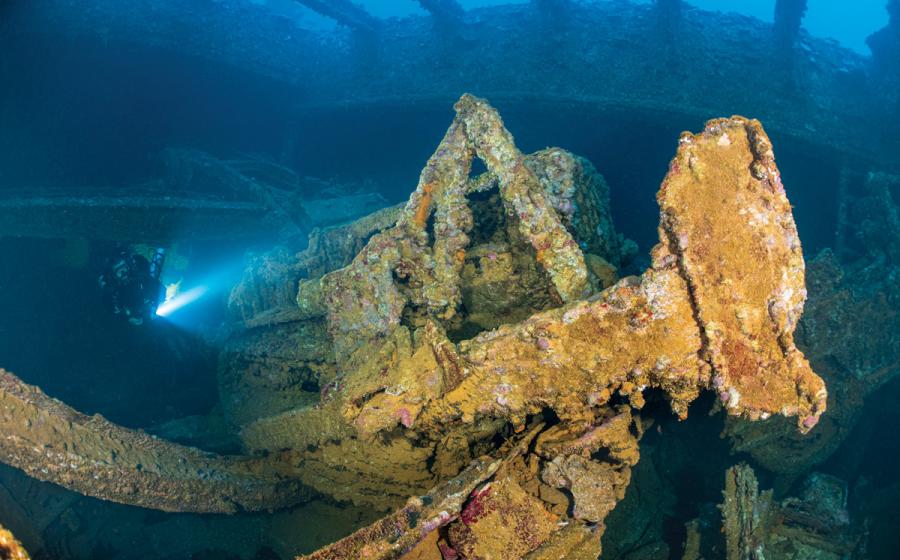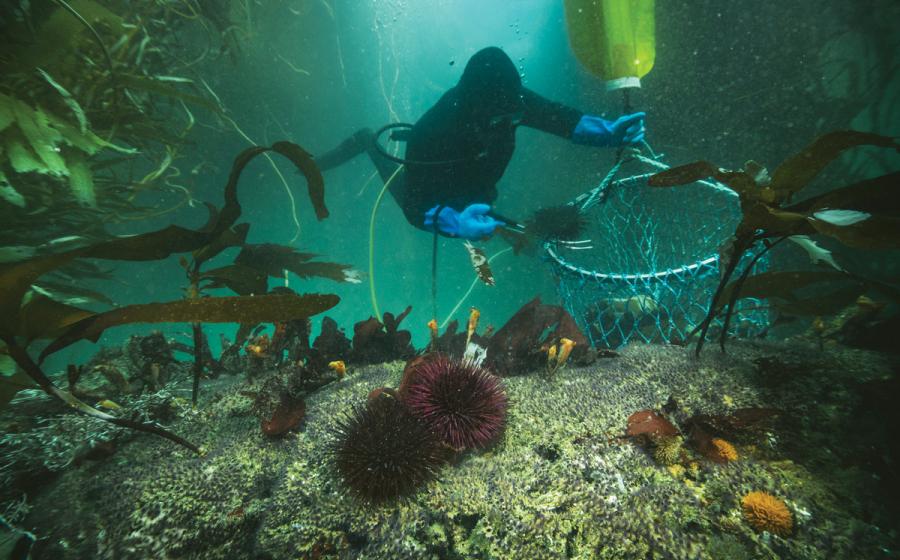The Best Scuba Destinations for Diving Healthy Marine Environments in 2021
Divers looking to explore the world's most vibrant undersea environments will be spoiled at any of these destinations, selected at the healthiest marinescapes by nearly 6,000 Scuba Diving magazine readers.
1. Bonaire
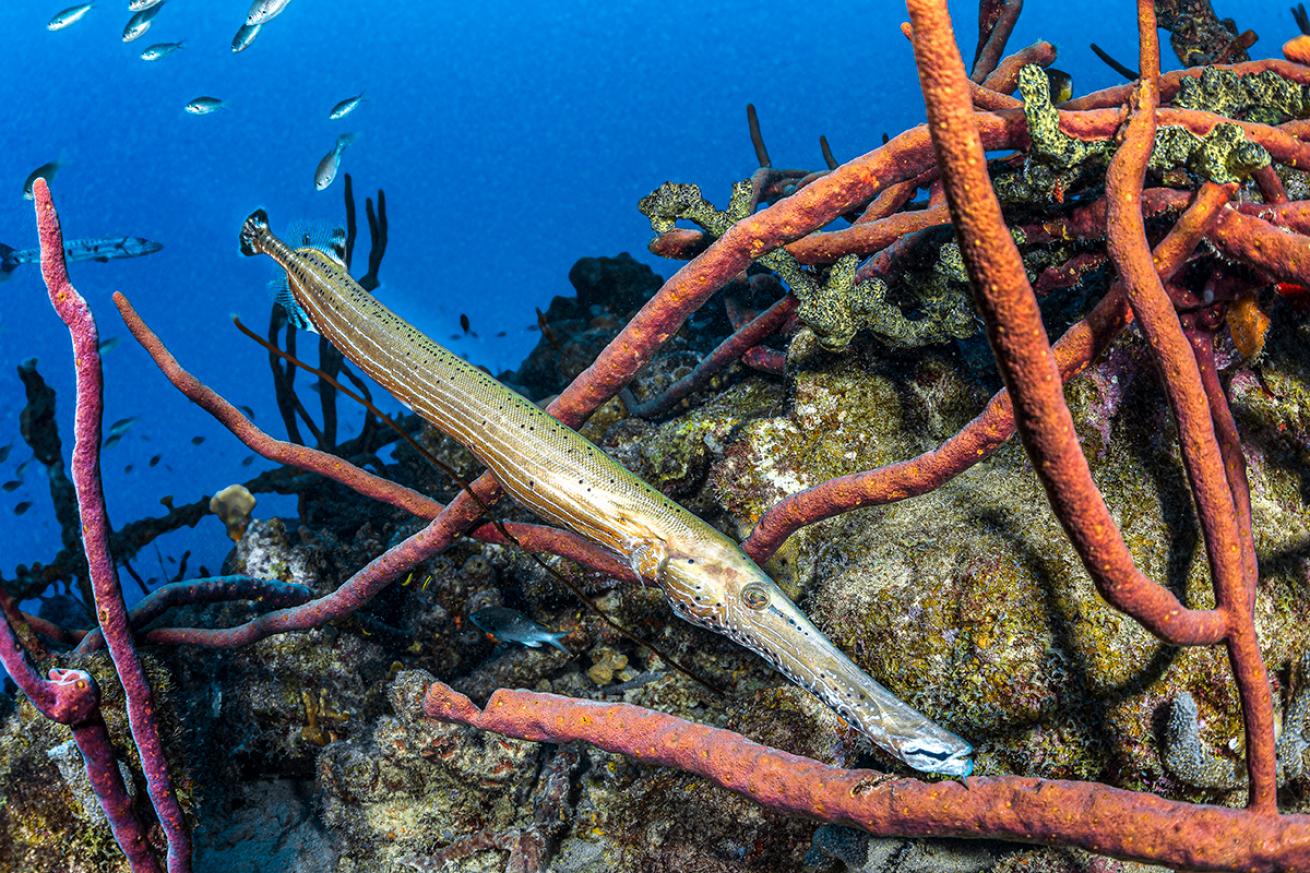
Jennifer PennerA trumpetfish enjoys a protected reef in Bonaire.
“Divers who come to Bonaire are absolutely blown away at how healthy the reefs are,” says Linda Baker, instructor at Carib Inn, a boutique resort on the Dutch island with an on-site scuba center.
Bonaire’s reefs have been marine-park protected since 1979, allowing populations of eagle rays, spotted drums, porcupinefish, trumpets, wrasses, eels and seahorses to flourish relatively unhindered for four decades.
The turtle population has also recently rebounded. Local groups like Sea Turtle Conservation Bonaire have been working to protect sea grass beds, rescue wounded turtles and monitor numbers.
“We have watched them multiply—so much so that we have many more turtles now than we had back in the day [before] we started protecting them,” says Baker.
Readers Picks
Resorts
Buddy Dive Resort, Bonaire
Carib Inn, Bonaire
Divi Resort, Bonaire
Eden Beach Resort, Bonaire
Plaza Resort, Bonaire
Operators
Buddy Dive, Bonaire
Carib Inn Dive Center, Bonaire
Divi Flamingo Divers, Bonaire
Toucan Divers at Plaza Resort, Bonaire
VIP Diving Bonaire
Wannadive Bonaire at Eden Beach Resort, Bonaire
2. Palau
Palau owes its healthy reefs both to geographic favor and to proactive legislation. This western Pacific island nation is lightly trafficked by tourists, seeing around just 100,000 visitors annually. Its water temperatures rarely rise above 82 degrees, allowing tropical corals and fish to thrive. Moreover, the Palau Trench delivers continuous upwellings of nutrients, keeping the food chain actively supplied.
To further stack the cards in favor of marine health, Palau declared the entirety of its waters a shark sanctuary in 2009. In 2012, the Rock Islands Southern Lagoon became a UNESCO World Heritage Site, and in 2015 Palau created one of the largest marine protected areas on the planet through its National Marine Sanctuary Act.
For divers, this means big animals, lots of color on the reef and unique experiences, such as current dives and regular opportunities to witness fish mating. All of these underwater experiences are on the menu with Sam’s Tours Dive Center Palau, a local operator offering scuba and kayak trips as well as advanced naturalist offerings focused on the unique—such as the spawnings of snapper and bumphead parrotfish.
One of the best dives is Ulong Channel, says Marc Bauman, director of sales for Sam’s Tours. “The site is known for one of the largest lettuce coral patches in the world, as well as a chance to see large giant clams,” he says.
The site also packs a punch for animal encounters. “There’s so much action, from hunting gray reef sharks and whitetips, schooling jacks and barracudas to hundreds of marbled groupers mating between April and July,” says Bauman. “This dive is just so breathtaking and exhilarating.”
Readers Picks
Resorts
Palau Pacific Resort
Operators
Fish ‘n Fins, Palau
Sam’s Tours, Palau
Liveaboards
Ocean Hunter I & II, Palau
Palau Aggressor II, Palau
3. Indonesia
Indonesia is stitched together by some of the planet’s hardest-to-reach places, where environmental stressors such as development and pollution are veritably nonexistent. West Papua, on the eastern edge of the island nation, is one such place—and its reefs serve as an example of what happens when there is almost no human impact.
“West Papua is too remote for mass tourism,” says Joane Esterhuizen, instructor with Meridian Adventure Scuba Dive Resort, so corals and marine animals do not experience negative effects from surges of dayboats.
It also has geographical benefits on its side. The “global ocean conveyor belt,” a worldwide current system, runs through West Papua. “It helps balance the climate,” says Esterhuizen, redistributing warm water along with ocean nutrients and sweeping corals clean of debris.
“For us, marine health shows up as the annual manta migration in Raja Ampat, as well as sightings of dugongs, tasseled wobbegong sharks, hawksbill sea turtles and mushroom coral pipefish,” Esterhuizen says.
Readers Picks
Resorts
Wakatobi Dive Resort, South Sulawesi, Indonesia
Operators
Wakatobi Dive Resort Dive Center, Indonesia
Liveaboards
The Arenui, Indonesia
All Star Aurora, Indonesia
Dewi Nusantara, Indonesia
Pelagian Yacht, Sulawesi, Indonesia
4. California
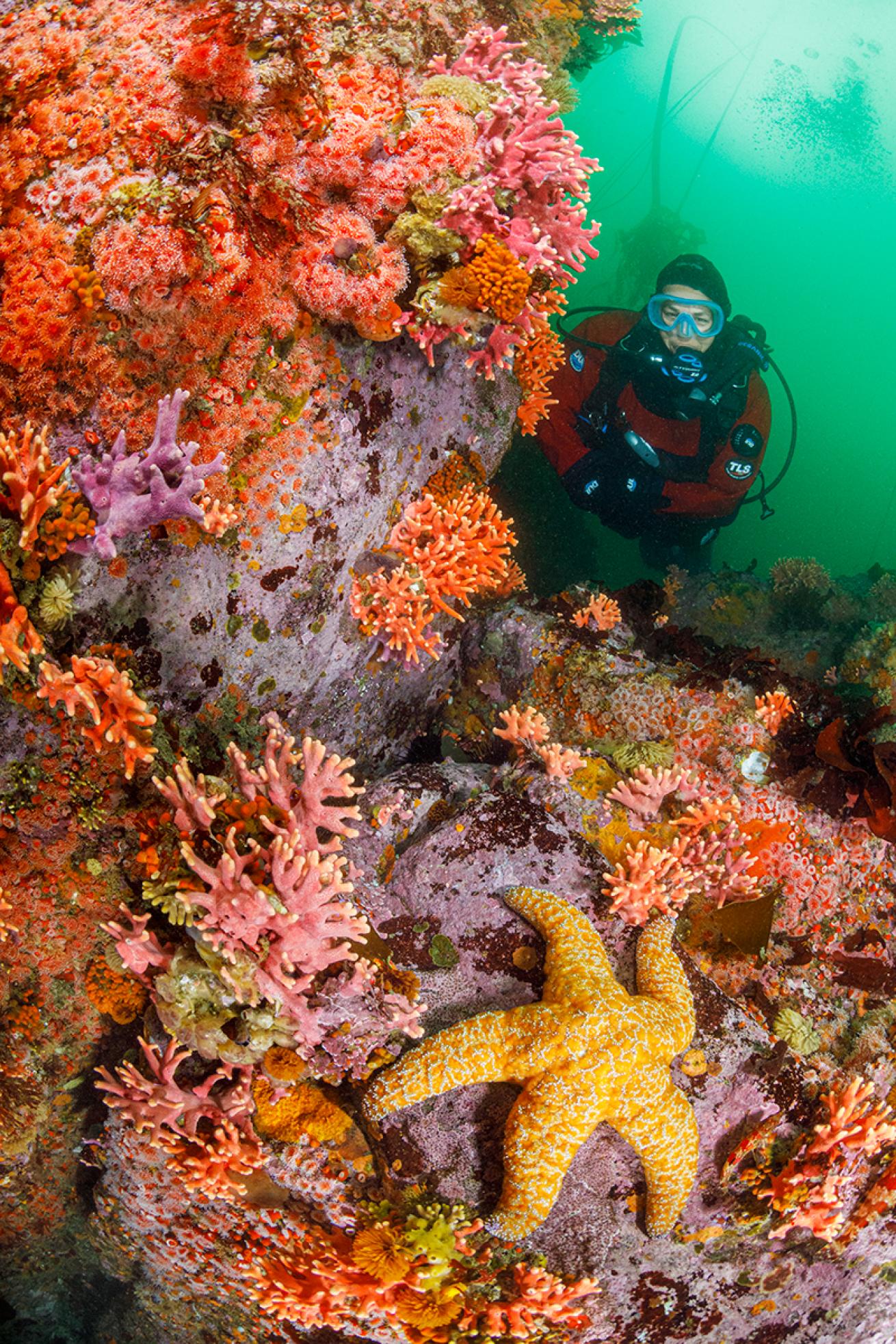
Brandon ColeAn ochre sea star rests among hydrocorals and sea anemones off the California coast.
“The poster child for local marine protection is easily Point Lobos,” says Brian Derubes, divemaster with Aquarius Dive Shop, of conservation efforts in Monterey, California.
The state park limits daily divers to just 30, whereas other sites could see up to 100 on a calm summer day.
“It’s all about the scale,” he says, explaining that the kelp forest here is taller and thicker, and numbers of fish species like sheephead sighted on each dive are significantly greater. Plus, the seafloor is littered with more abalone shells than the surrounding areas. He’s even seen the occasional whale bone.
Harbor seals can be found at a lot of local dive sites, but seem to prefer the protection of the cove when it comes to breeding. “Dive it, and it really feels like you are going back in time,” says Derubes.
5. Costa Rica
In Costa Rica, caring for the environment is a community affair. Take the Pacific coast province of Guanacaste, where scuba centers like Rich Coast Diving are creating opportunities for residents to protect the environment.
“We are working with the local community, explaining whatever you throw on the street ends up in the beach,” says Brenda van Gestel, co-owner of the shop, as one example of how she and her employees help people understand their impact on the ocean.
Rich Coast Diving is working with about 200 local families through a unique food bank that distributes groceries in exchange for participating in a beach cleanup. She sees these efforts as an opportunity to beautify the landscape while further highlighting how pollution affects the reef and fish on which locals rely.
Van Gestel says she has watched the underwater world begin to rebound over the years.
“I’ve been here 16 years, and have seen dive sites that once were home to 20 whitetips get depleted down to three or four, and now we see 10 at the spot. It’s progress.”
Readers Picks
Operators
Rich Coast Diving, Guanacaste, Costa Rica
Liveaboards
Undersea Hunter, Cocos, Costa Rica
6. Cuba
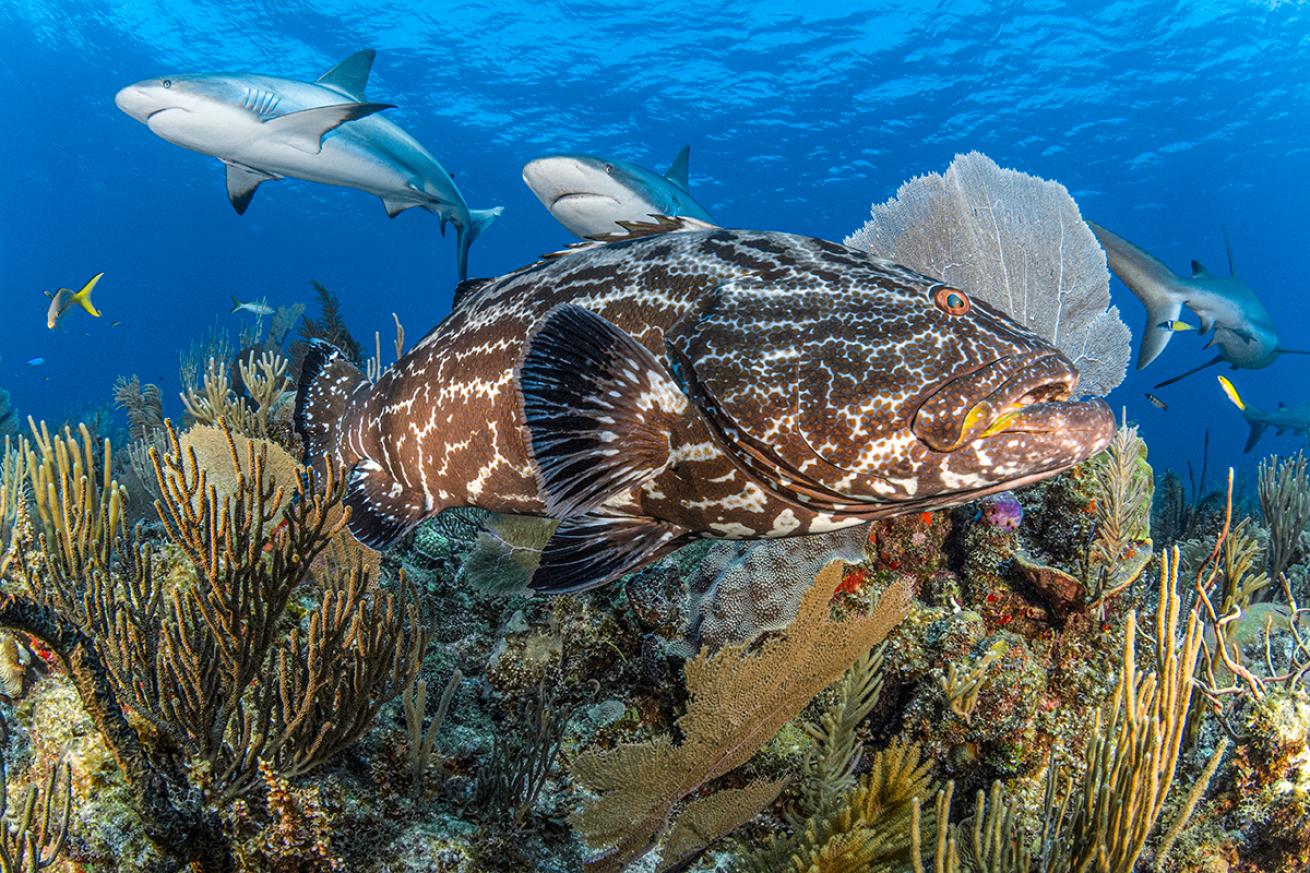
Brandon ColeBlack grouper thrive in Cuba’s Gardens of the Queen reserve.
“The whole Cuban approach is about what is best for society and the environment together,” says Amy Houghton Warren, founder and owner of Cuba Scuba Tours, of the country’s approach to protecting its reefs.
Warren’s company specializes in dive travel with a focus on grassroots community projects, granting her a unique perspective on the Caribbean country’s efforts. These include partnerships between groups like Havana’s National Aquarium of Cuba and the Florida Aquarium, which are growing and studying staghorn corals—Cuba’s staghorn populations have proven to be far more resilient than their Caribbean counterparts.
The island’s shark populations are similarly hearty; the reefs of Cuba, especially in places like the Gardens of the Queen to the south and Guanahacabibes Peninsula to the west, have impressive numbers of silky and reef sharks.
Readers Picks
Liveaboards
All Star Avalon II, Cuba

